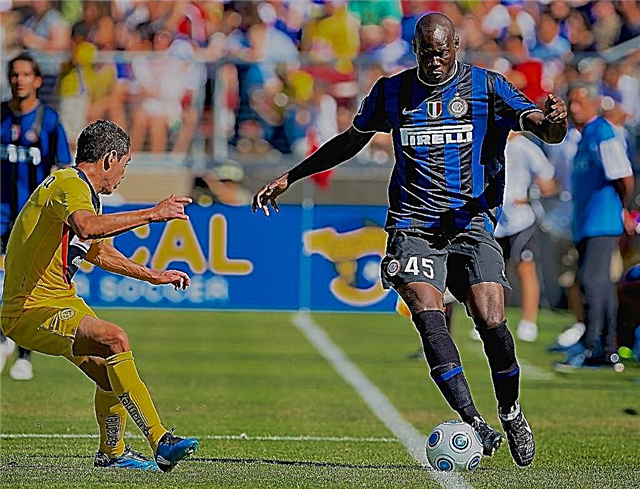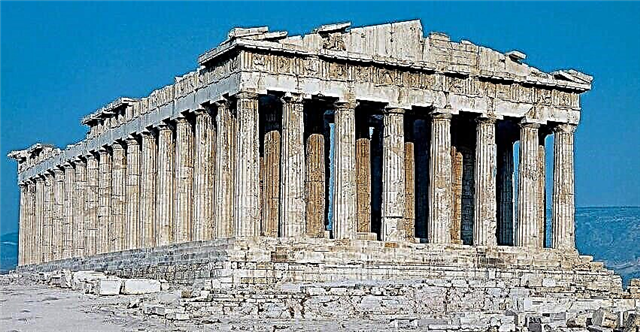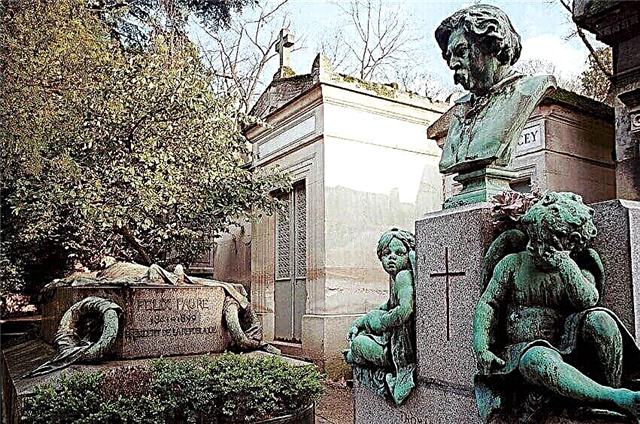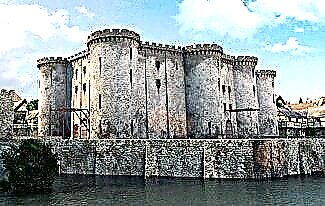Felix Lope de Vega (full name Felix Lope de Vega and Carpio; 1562-1635) - Spanish playwright, poet and prose writer, an outstanding representative of the Golden Age of Spain. Over the years, he wrote about 2000 plays, of which 426 have survived to this day, and about 3000 sonnets.
There are many interesting facts in the biography of Lope de Vega, which we will talk about in this article.
So, before you is a short biography of Felix Lope de Vega.

Biography of Lope de Vega
Felix Lope de Vega was born on November 25, 1562 in Madrid. He grew up in a simple family of gold embroidery craftsman Felix de Vega and his wife Francis.
Childhood and youth
The father of the future playwright did his best to raise his son in the best possible way. Having collected enough funds, he bought a noble title and helped the boy get a decent education.
Lope de Vega's mental and creative abilities began to manifest itself in childhood. He was easily given various sciences, as well as the study of languages. An interesting fact is that when the child was about 10 years old, he was able to translate Claudian's poem "The Abduction of Proserpina" in poetic form!
3 years later, Lope de Vega wrote the first comedy "True Lover". Initially, he was a student at a Jesuit college, after which he continued his studies at the university in Alcala.
During that period of his biography, Lope de Vega fell in love with a girl who did not reciprocate. As a result, for satire directed at the family of his beloved who rejected him, the young man was brought to trial. He was forbidden to return to the capital for 10 years.
Despite such a harsh punishment, Lope returned to Madrid to kidnap his new darling and secretly marry her. When he was about 26 years old, he became a member of the "Invincible Armada" campaign, after the defeat of which he settled in Valencia.
It was in this city that Lope de Vega wrote many dramatic works. In the period 1590-1598. he managed to work as a secretary for the Marquis of Malvpik and two dukes - Alba and Lemoss. In 1609 he received the title of voluntary servant of the Inquisition, and 5 years later he became a clergyman.
Literature and theater
According to the playwright himself, over the years of his creative biography, he managed to create 1,500 comedies. At the same time, at the moment only 800 of his plays are known, which makes it possible to be skeptical about the words of Lope de Vega.
The Spaniard's non-dramatic works are contained in 21 volumes! These include Dorothea, 3 novels, 9 epic poems, several short stories, religious stories, and many lyrical compositions. Depending on the audience, Lope wrote works in different styles. For example, for enlightened connoisseurs he used the scholarly style, and for the broad masses - the folk style.
The writer loved to experiment, as a result of which he was not afraid to deviate from the established canons of Spanish drama. At that time, plays were written according to the principles of unity of place, time and action. Lope de Vega left only action, reuniting humor and tragedy in his own works, which later became the basis for the Spanish drama.
The works of the classics cover a variety of topics. It is curious that in relation to poetry, he first of all turned to imagination and feelings, and not to reason.
Lope de Vega's plays are structured in such a way that an incident that interferes with the stream of actions upsets the measured stream of phenomena, bringing the tension of dramatic experiences to the point of tragedy, so that later the seething stream of events will be introduced into the mainstream of legality and tough Catholic ethics.
In his own comedies, the playwright often resorted to witty, humorous, proverbs and sayings. A very unusual comedy is The Dog in the Manger, in which the Countess discovers that she loves her personal secretary. In addition, here the author clearly showed how people from different social strata are disarmed before the magic of love.
Personal life
In 1583, Lope de Vega began an affair with the married actress Elena Osorio (the history of their relationship was reflected in the drama Dorothea). Their relationship lasted for 5 years, but in the end Elena preferred a more wealthy gentleman.
The offended young man decided to take revenge on the girl by writing a couple of sarcastic epigrams addressed to the actress and her family. Osorio sued him, which ruled to expel Lope from Madrid.

Three months after the announcement of the verdict, the writer marries a girl named Isabelle de Urbina. After 6 years of marriage, Isabelle died due to postpartum complications in 1594. The following year, the man decides to return to Madrid, leaving in Valencia 3 graves dear to him - his wife and 2 little daughters.
Having settled in the capital, Lope de Vega met the actress Michaela de Lujan (in his works he sang her under the name of Camila Lucinda). Their romance did not end even after the playwright remarried the daughter of a wealthy merchant named Juana de Guardo.
Lope de Vega was able to stop all communication with his mistress at a time of deep spiritual crisis (in 1609 he became a confidant of the Inquisition, and in 1614 - a priest). The classic's mental confusion was overshadowed by a series of deaths of people close to him: the son of Carlos Felix, his wife, and later Michaela.
Already in old age, Lope experienced the feeling of love for the last time. His chosen one was 20-year-old Marta de Nevarez, in honor of whom he wrote a lot of poetry, and also wrote a number of comedies.
The last years of Lope de Vega's life were darkened by new tragedies: Marta dies in 1632, then his daughter is kidnapped, and his son dies in a military campaign. And yet, despite many serious trials, he never stopped writing for a single day.
Death
A year before his death, Lope composed his last comedy, and his last poem - 4 days. In the past 2 years, the playwright has led an ascetic life, thus trying to atone for his sins. For hours on end, he was in prayer, begging God for forgiveness.
Lope de Vega died on August 27, 1635 at the age of 72. Many people came to spend the last journey of the great writer.
Photo by Lope de Vega












